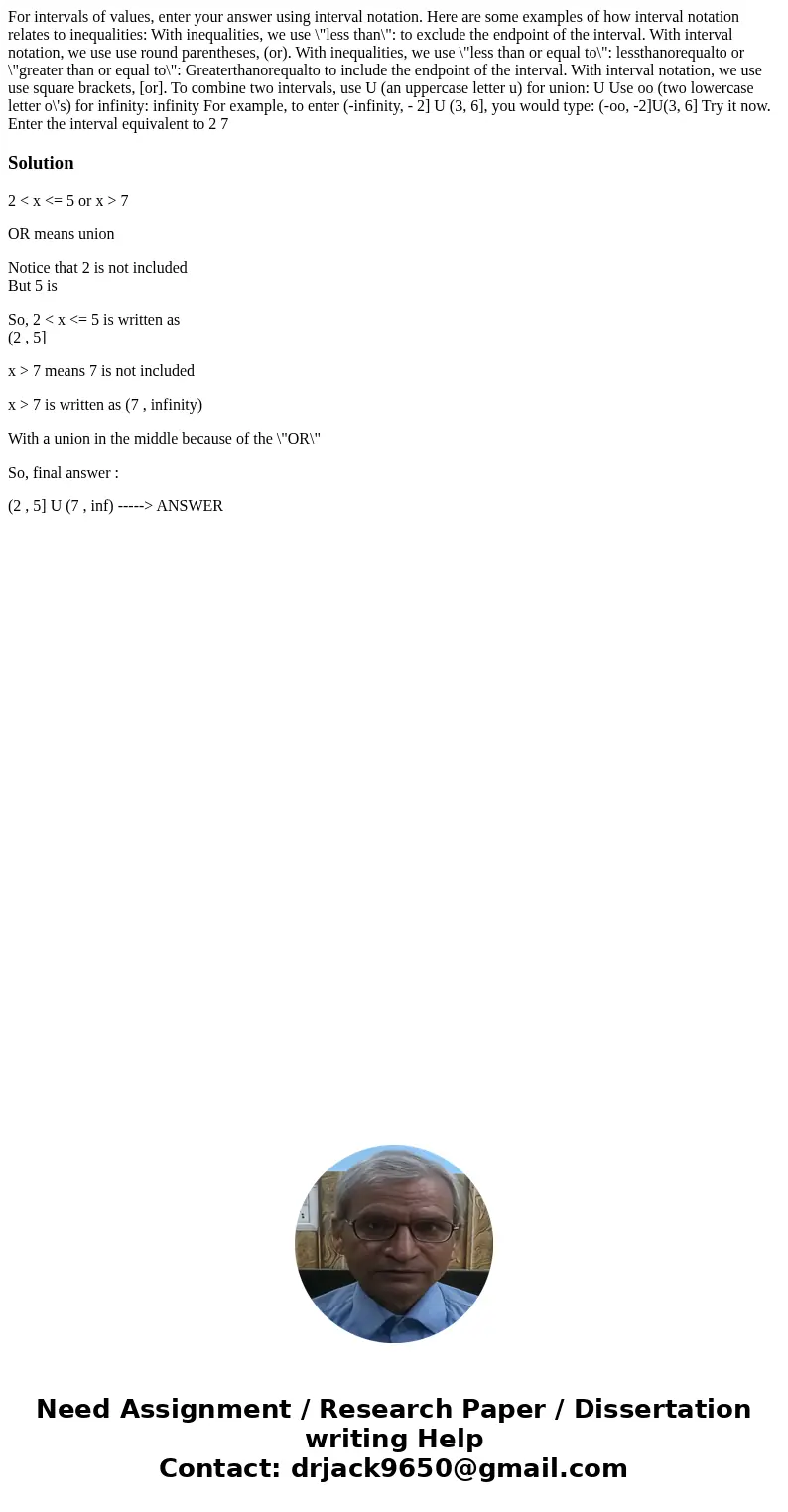For intervals of values enter your answer using interval not
For intervals of values, enter your answer using interval notation. Here are some examples of how interval notation relates to inequalities: With inequalities, we use \"less than\": to exclude the endpoint of the interval. With interval notation, we use use round parentheses, (or). With inequalities, we use \"less than or equal to\": lessthanorequalto or \"greater than or equal to\": Greaterthanorequalto to include the endpoint of the interval. With interval notation, we use use square brackets, [or]. To combine two intervals, use U (an uppercase letter u) for union: U Use oo (two lowercase letter o\'s) for infinity: infinity For example, to enter (-infinity, - 2] U (3, 6], you would type: (-oo, -2]U(3, 6] Try it now. Enter the interval equivalent to 2 7
Solution
2 < x <= 5 or x > 7
OR means union
Notice that 2 is not included
But 5 is
So, 2 < x <= 5 is written as
(2 , 5]
x > 7 means 7 is not included
x > 7 is written as (7 , infinity)
With a union in the middle because of the \"OR\"
So, final answer :
(2 , 5] U (7 , inf) -----> ANSWER

 Homework Sourse
Homework Sourse